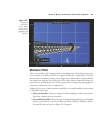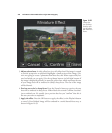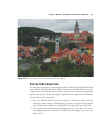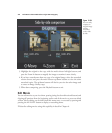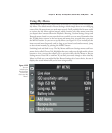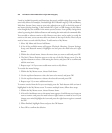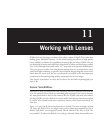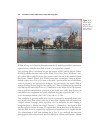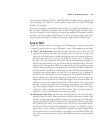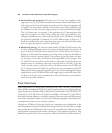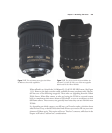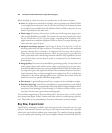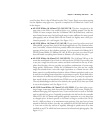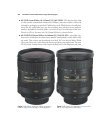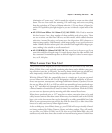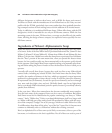sensors (like the Mamiya 645ZD or Hasselblad H3D-39 medium format digitals). By
their reckoning, the “half-size” sensors found in cameras like the Nikon D700 and
D3/D3x are “cropped.”
If you’re accustomed to using full-frame film cameras, you might find it helpful to use
the crop factor “multiplier” to translate a lens’s real focal length into the full-frame equiv-
alent, even though, as I said, nothing is actually being multiplied. Throughout most of
this book, I’ve been using actual focal lengths and not equivalents, except when refer-
ring to specific wide-angle or telephoto focal length ranges and their fields of view.
Crop or Not?
There’s a lot of debate over the “advantages” and “disadvantages” of using a camera with
a “cropped” sensor, versus one with a “full-frame” sensor. The arguments go like these:
■ “Free” 1.5X teleconverter. The Nikon D7000 (and other cameras with the 1.5X
crop factor) magically transforms any telephoto lens you have into a longer lens,
which can be useful for sports, wildlife photography, and other endeavors that ben-
efit from more reach. Yet, your f/stop remains the same (that is, a 300mm f/4
becomes a very fast 450mm f/4 lens). Some discount this advantage, pointing out
that the exact same field of view can be had by taking a full-frame image, and trim-
ming it to the 1.5X equivalent. While that is strictly true, it doesn’t take into account
a factor called pixel density. A 12-megapixel DX camera like the Nikon D5000 has
the same absolute resolution as a full-frame D3s, but the D5000 packs all those pix-
els together much more tightly, into that 23.6 × 15.8mm area. So, a 300mm f/4
lens delivers the same field of view as a 450mm optic at the D5000’s full 12MP res-
olution. When you crop the D3s image to get the same FOV, you’re using only 5
megapixels worth of resolution. So, while both images will be framed the same, the
D5000 version, with its higher pixel density, will be sharper. This comparison
becomes even more dramatic when you make the comparison with a camera hav-
ing a much higher resolution, such as the D7000. The D7000 packs 16.2 mega-
pixels into a DX-sized frame, while the D3s still has 5MP—less than a third the
resolution—in the same DX frame when using crop mode.
■ Dense pixels=more noise. The other side of the pixel density coin is that the denser
packing of pixels in the D7000 sensor means that each pixel must be smaller, and
will have less light-gathering capabilities. Larger pixels capture light more efficiently,
reducing the need to amplify the signal when boosting ISO sensitivity, and, there-
fore, producing less noise. In an absolute sense, this is true, and cameras like the
D3s do have sensational high-ISO performance. However, the D7000’s sensor is
improved over earlier cameras, so you’ll find it performs very well at higher ISOs.
You needn’t hesitate to use ISO 1600 (or even higher) with the Nikon D7000: just
don’t expect the same low-noise results at ISO 6400 as D3s owners get from their
cameras.
Chapter 11 ■ Working with Lenses 347



